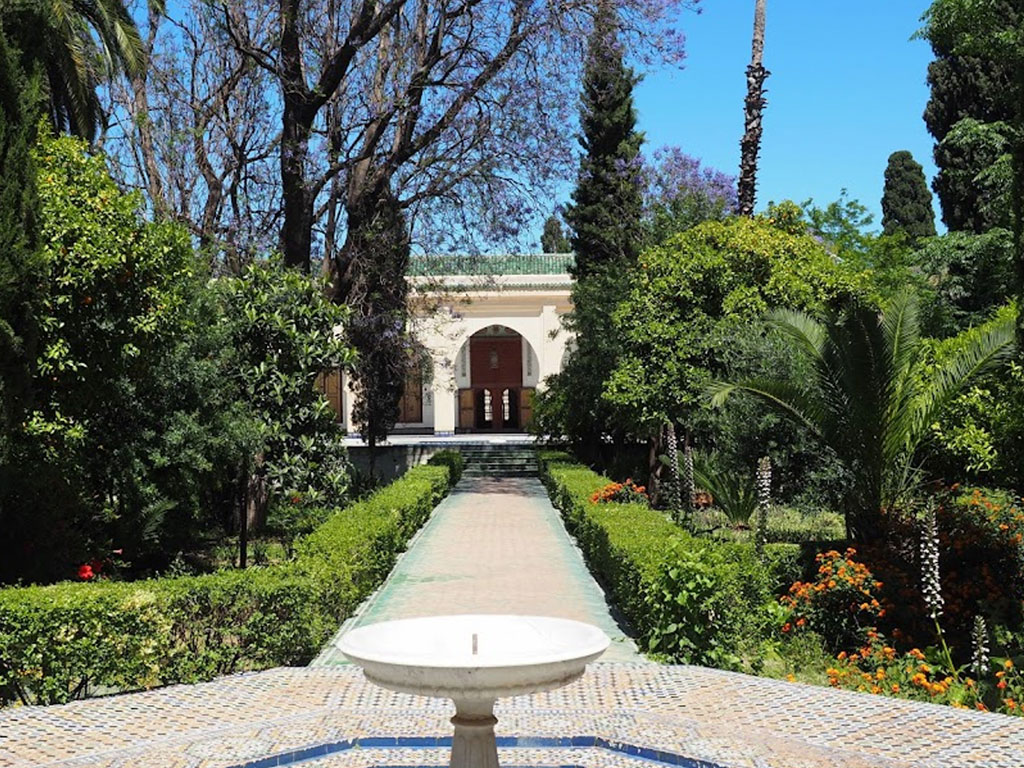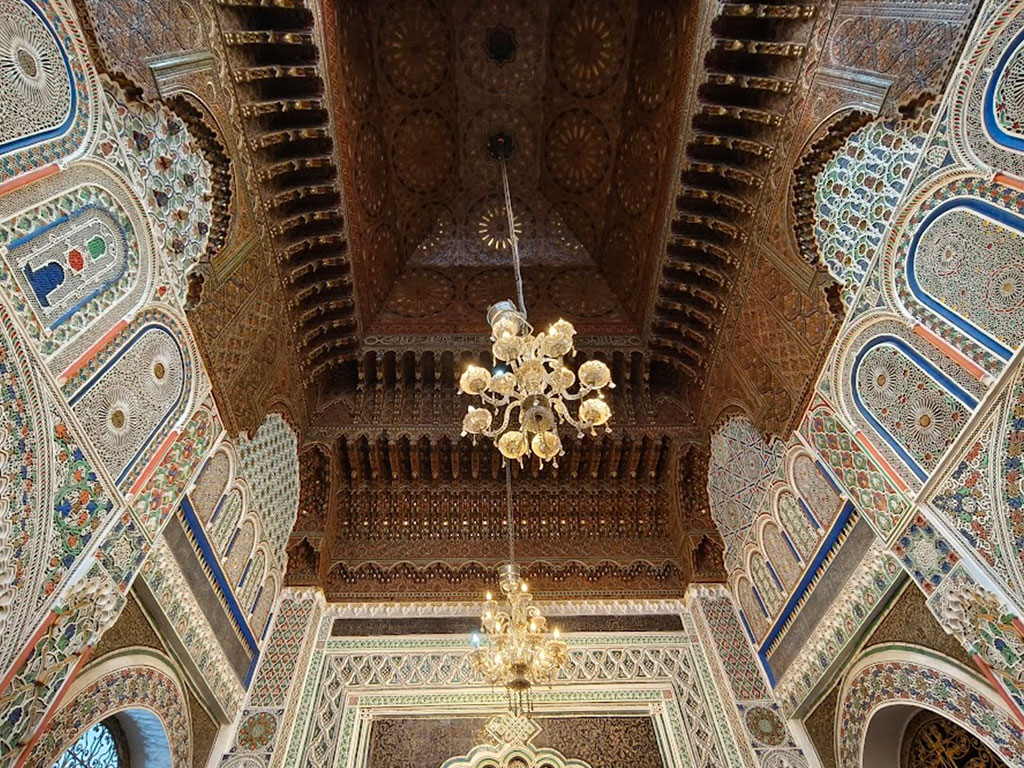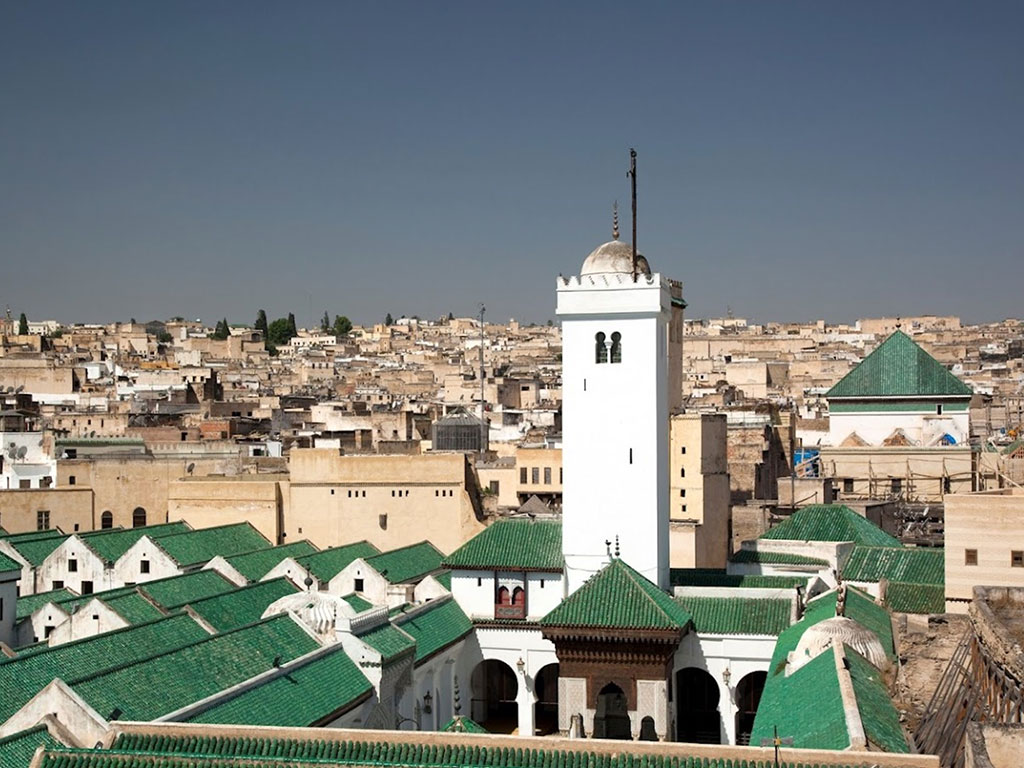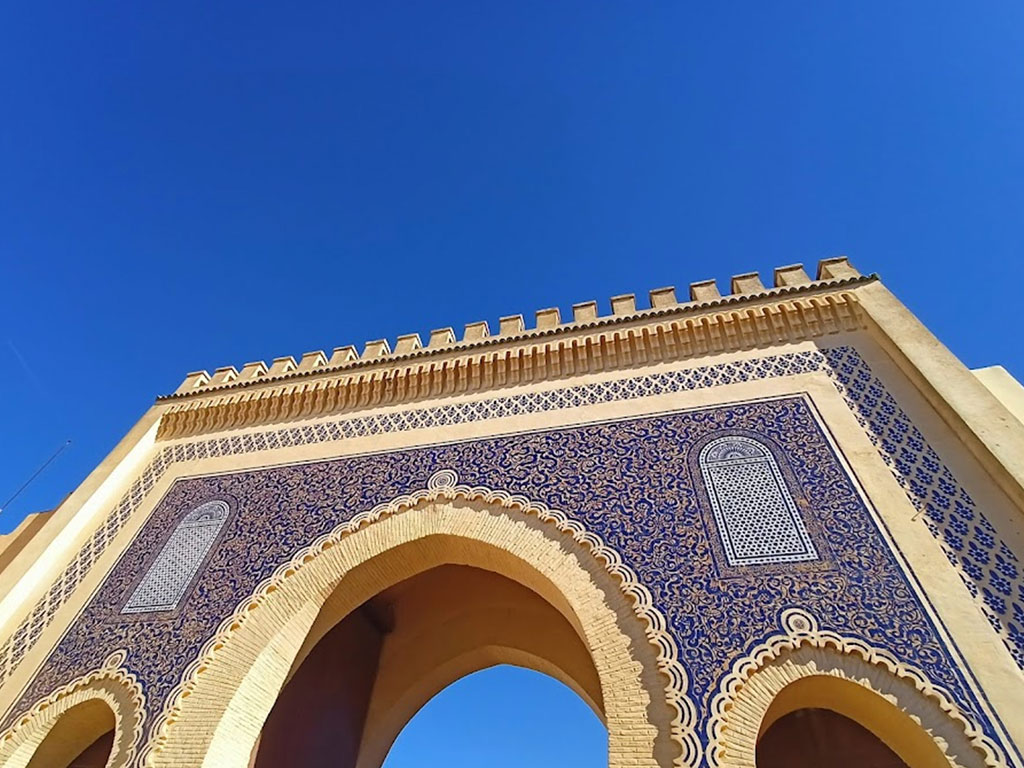Fes Revealed: Journey Through the Medina’s Grandeur!
Table of Contents
In the heart of Morocco, there lies a city where the past doesn’t just whisper; it echoes through the streets and bazaars. Fes, often referred to as the cultural and spiritual capital of Morocco, is home to the world’s largest living medieval medina, a place where history is not just written but also lived. In this comprehensive guide, we embark on an evocative journey through Fez’s ancient Medina, a place where every alley tells a story, every marketplace buzzes with centuries-old secrets, and every monument stands as a testament to a rich, storied past.
Immersing in the Old World: The Essence of Fes
Stepping into the Medina of Fez (Fes el-Bali) is akin to traveling back in time. The labyrinthine streets, the bustling souks, the aromatic scents of spices and tanned leather, and the sound of the artisans at work transport you to a different era. The city, founded in the late 8th century by Idris I, has been a seat of power, learning, and commerce throughout its history. It’s home to the University of Al-Qarawiyyin, founded in 859 AD, recognized as one of the oldest universities in the world.

A Tapestry of Cultures
Fes’s history is a tapestry woven from various cultures – Arabs, Berbers, Moors, and Jews have all left their indelible mark on the city. This convergence of cultures is evident in the architectural styles, the culinary flavors, and the traditional crafts that define the city’s unique character.
The Medina: A Labyrinth of Wonders
Navigating the Medina of Fez is an adventure in itself. The narrow, winding alleys, lined with shops and stalls, lead to unexpected open spaces, grand mosques, and historic madrasas. The Medina, encircled by ancient walls, is a maze of over 9,000 streets, some so narrow that sunlight barely touches the ground.
The Souks: A Sensory Overload
The souks of Fez are famous for their variety and vitality. Here, you can find everything from luxurious silks and spices to intricately crafted metalwork and leather goods. Each souk specializes in a particular craft or product, reflecting the guild system that has organized the city’s economic life for centuries.
The Tanners’ Quarter
One of the most iconic and visually striking parts of the Medina is the Tanners’ Quarter. Here, leather is still tanned using traditional methods that have not changed since medieval times. Observing this process from a nearby rooftop provides a unique, if somewhat pungent, insight into Fes’s enduring artisanal traditions.
The Culinary Heart of Morocco
Moroccan cuisine is renowned for its flavors and variety, and Fez is often considered its culinary capital. The food of Fes is a reflection of its history, with influences from Andalusian Spain, Arab East, and the indigenous Berber culture.
A Feast for the Senses
Exploring the food markets in Fez is a must. Stalls overflow with fresh produce, olives, preserved lemons, and an array of spices. Traditional dishes such as tagine (a slow-cooked stew) and pastilla (a savory-sweet pastry) are not just meals but culinary experiences.
A City of Artisans: Preserving Ancient Crafts
Fez is also known for its skilled artisans. The city’s craftsmen are renowned for their intricate woodwork, metalwork, and ceramics. The art of zellige (tilework), seen in many of Fez’s buildings, is an exquisite example of this craftsmanship.
The Artisans’ Workshops
The workshops of the artisans are open to visitors, offering a window into the city’s living heritage. Here, you can watch as craftsmen create intricate mosaics, carve delicate patterns into cedarwood, or forge beautiful metal lamps.
Architectural Marvels: The Historic Landmarks of Fez
Fes’s architectural heritage is staggering in its beauty and diversity. From the grandeur of the Royal Palace to the ornate detail of the Bou Inania Madrasa, the city’s buildings are a testament to its historical importance.

The Spiritual and Educational Centers
The University of Al-Qarawiyyin and the Bou Inania Madrasa are not just architectural wonders but also centers of learning and spirituality. The University’s library, recently restored, houses a collection of priceless manuscripts, some dating back to the 9th century.

Living Traditions: The Cultural Fabric of Fez
The cultural life of Fez is as vibrant today as it has ever been. Traditional festivals, religious ceremonies, and celebrations are an integral part of life in the Medina.
The Festival of Sacred Music
One of the highlights of Fes’s cultural calendar is the Festival of World Sacred Music. This annual event draws musicians and audiences from around the world, turning the city into a global stage for spiritual and artistic expression.
Navigating the Medina: Tips for the Intrepid Traveler
Navigating the Medina can be daunting. The narrow, winding streets, often crowded and bustling, can disorient even the most experienced traveler. Here are some tips to help you explore Fez’s heart:
- Hire a Guide: A knowledgeable local guide can not only help you navigate the Medina’s maze but also provide insights into its history and culture.
- Dress Conservatively: Fez is conservative, and respectful attire will help you blend in and show respect for local customs.
- Be Prepared to Walk: The Medina is best explored on foot. Comfortable walking shoes are a must.
- Stay Alert: Keep an eye on your belongings and be cautious of motorbikes, which often zip through the narrow streets.
- Guided Day Tour: Enjoy a private car and expert guide to enhance your exploration of Fez’s rich history and culture.
The Spiritual Essence of Fez
The spiritual atmosphere in Fez is palpable. With every call to prayer echoing through the Medina, one is reminded of the city’s deep-rooted Islamic traditions. The numerous mosques and zaouias (mausoleums of saints) scattered throughout the city are not just places of worship but also symbols of the spiritual identity of Fez.
Exploring the Sacred
Visiting these sacred sites offers a deeper understanding of the spiritual significance of Fez. While non-Muslims may not enter most mosques, the exteriors themselves are architectural marvels, with intricate carvings and stunning tile work.
Fes at Night: A Different World
As the sun sets, the Medina transforms. The streets, lit by lanterns, take on a mystical quality. Nighttime in Fez is a quieter, more introspective experience, offering a different perspective on the city.
The Night Markets
Evening is also when the night markets come alive. These markets offer a different array of goods, from street food to traditional Moroccan lamps. The night markets are a perfect place to enjoy a leisurely stroll and absorb the nocturnal ambiance of the Medina.
The Festivals and Celebrations of Fez
Fez is a city that loves to celebrate. Throughout the year, numerous festivals and events take place, each adding to the rich tapestry of life in the Medina.
The Moussem of Moulay Idriss II
One of the most important festivals in Fez is the Moussem of Moulay Idriss II, commemorating the founder of the city. This event is marked by processions, music, and the scent of burning candles and incense, creating a truly enchanting atmosphere.
Shopping in Fez: A Treasure Trove of Handicrafts
Shopping in the Medina is an experience in itself. The markets of Fez are known for their high-quality handicrafts, which make for wonderful souvenirs and gifts.
What to Buy in Fez
Popular items include leather goods from the tanneries, traditional Moroccan slippers (babouches), ceramics, and textiles. Remember to haggle – it’s part of the shopping experience in Morocco.
Eating Out in Fes: A Culinary Adventure
The culinary scene in Fez offers everything from street food to high-end dining. The city’s restaurants serve a wide range of Moroccan and international dishes, catering to all tastes.
Recommendations for Dining
For an authentic Moroccan experience, try a traditional riad restaurant. These establishments often feature stunning interiors and offer a serene dining environment, away from the hustle and bustle of the Medina.
Staying in Fez: From Luxury Riads to Budget Hostels
Accommodation in Fez ranges from luxurious riads to affordable hostels. Staying in a riad, many of which are centuries-old buildings converted into boutique hotels, is a unique way to experience the historic charm of the city.
Choosing the Right Accommodation
When choosing where to stay, consider proximity to the Medina, as this will be the focal point of your visit. Many riads also offer rooftop terraces, providing stunning views over the city.
Day Trips from Fez
While Fez itself offers plenty to explore, it’s also a great base for day trips to nearby attractions.
Volubilis and Meknes
A popular day trip is to the ancient Roman ruins of Volubilis and the historic city of Meknes. Both sites are UNESCO World Heritage sites and offer a glimpse into Morocco’s diverse historical tapestry.
Fez: A City of Stories
Every corner of Fez has a story to tell. From the grandeur of its historic buildings to the simplicity of daily life in the Medina, Fez is a city that speaks to the soul.
The Storytellers of Fez
In traditional Moroccan culture, storytellers (hakawatis) played a vital role in preserving and passing down stories. While this tradition is fading, the spirit of storytelling is very much alive in the culture and heritage of Fez.
Conclusion: The Timeless Majesty of Fes
Our journey through the ancient Medina of Fez comes to an end, but the memories and impressions of this magical city linger. Fez is more than just a destination; it’s an experience, a journey into a world where the past is not just remembered, but vibrantly alive.
Fez invites you to lose yourself in its winding alleys, to find yourself in its ancient wisdom, and to be part of its ongoing story. It’s a city that doesn’t just belong to Morocco but to the world – a treasure trove of history, culture, and spiritual depth.
In Fes, every step is a journey through time, every sight a window into a bygone era, and every encounter a connection to a rich, enduring heritage. This is Fez – the soul of Morocco, the guardian of history, and the heart of an ancient civilization.
To gain more insight, consider reading further articles focusing on “Chefchaouen” and “Essaouira“.
www.privatedrivermorocco.Com




Comments are closed